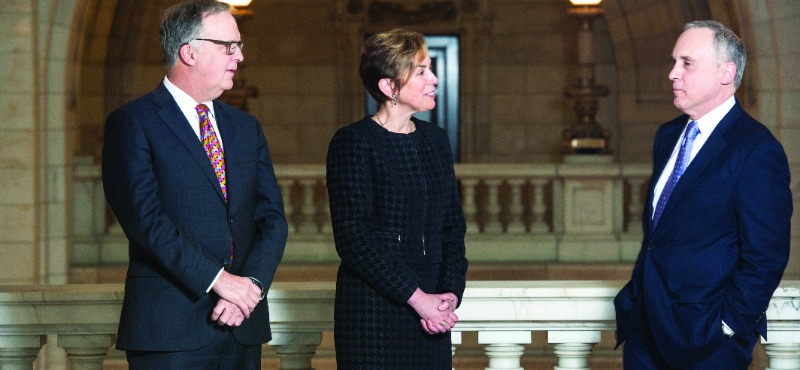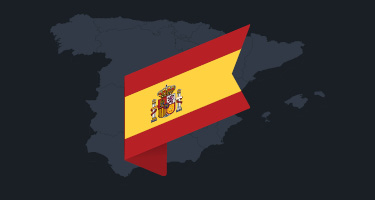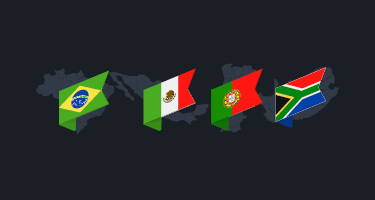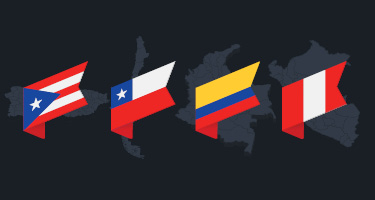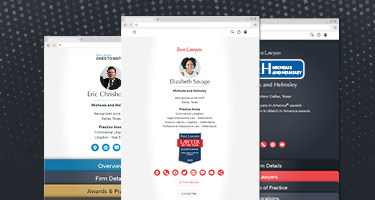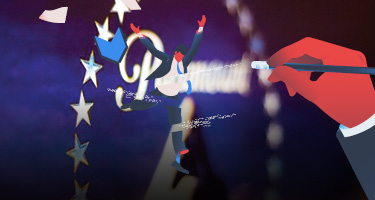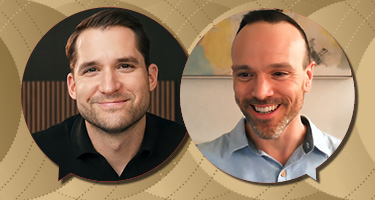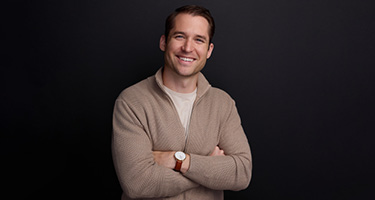With the national conversation increasingly focused on inequality, the enormous gaps in income and job opportunities are landing squarely on the public agenda. But another crucial gap that aggravates inequality in America can be easily overlooked: the scarcity of legal services for the poor.
In Ohio, it’s estimated that only one of every five people who need legal assistance has access to a lawyer. About a dozen years ago, in a happy coincidence, bar association groups in Northeast Ohio began strategizing about how the legal community could induce more lawyers to perform pro bono services at about the same time the Legal Aid Society of Cleveland (LASC) was attempting to reinvigorate its programs.
In time, recalls Jones Day partner David Kutik, then-president of the Cleveland Bar Association and later president of the board of LASC, the idea morphed into a volunteer campaign. “It was going to be like a United Way campaign—instead of the firm committing dollars, you would commit to a certain number of pro bono hours.” Ultimately, about 50 firms in the region agreed to get involved in pro bono activities.
“We use pro bono to train young lawyers,” he says. “At any one time, our firm is probably handling between six and 10 cases that our younger lawyers are pursuing on a pro bono basis.”
Working with Legal Aid, the Cleveland legal community came up with a menu of areas in which lawyers could offer their pro bono services. That included grief advice clinics and sessions on immigration, housing, and domestic relations.
Eventually, to provide even more inducements to lawyers, the conversation turned to tying pro bono credits to continuing legal education requirements. A coalition of lawyers’ groups approached the Supreme Court of Ohio, and in 2014 the court ruled that attorneys in the state can receive one credit hour of continuing legal education for every six hours of pro bono legal services they perform, up to a maximum of 6 credit hours for every two-year period. According to the American Bar Association, Ohio is now one of 11 states that permit pro bono activity to be counted toward CLE requirements.
“Since the pro bono rule was instituted at the start of 2014, more than 1,200 attorneys have provided nearly 3,000 hours of volunteer work. While those numbers are impressive, they don’t tell the whole story,” says Supreme Court Chief Justice Maureen O’Connor. “Because the rule allows one hour of CLE credit for every six hours of pro bono work, many more Ohioans are receiving help with their legal problems. That’s a tremendous credit to the bar of Ohio.” Of the 19,700 people Cleveland Legal Aid helped in 2015, 20 percent were served by a volunteer.
One such case involved an attempted home foreclosure. A 37-year-old mother of six thought she would lose her life savings after investing thousands of dollars in upgrades on a home she purchased as-is in 2014, when two men appeared at her door claiming they owned the house through a quit-claim deed. They threatened to evict her unless she began paying them rent. A Legal Aid volunteer eventually negotiated a settlement that established her as the rightful owner.
Some have asked, are pro bono cases really educational? George Coakley, a veteran attorney with the firm Coakley Lammert, who has argued cases before the U.S. Supreme Court, says it clearly was in his case. He began interning for Legal Aid while still in law school, 40 years ago, and has continued what he calls his “love affair” with Legal Aid ever since.
“It was a great introduction to the community. I wasn’t from here. I grew up in Youngstown. And they allowed me to do things that were more interesting than law school.” He says handling cases for Legal Aid presented situations he never would have encountered in his traditional practice.
Jones Day’s Kutik agrees. Even though his firm recruits some of the brightest young legal talent in the country, he notes that with the vanishing trial phenomenon, even the largest firms have to get creative about providing live learning opportunities for fledgling lawyers. “We use pro bono to train young lawyers,” he says. “At any one time, our firm is probably handling between six and 10 cases that our younger lawyers are pursuing on a pro bono basis.”
After all, notes Diane Citrino, of the firm Giffen & Kaminski, “many of us learn best by doing, not just listening to a lecture or reading a treatise. Actually doing pro bono makes all of us better at our craft and brings us close to why we became lawyers in the first place—to help others and solve problems.” Earlier this year, Citrino won a landmark victory in a landlord-tenant dispute, when a federal district court ordered a pair of notorious Cleveland landlords to pay her Legal Aid clients $4 million.
But long before that case, Citrino was a poster child for the value of pro bono service. “I cannot remember a time when I did not do pro bono. It was always part of being a lawyer,” she says. She was a public interest law intern in law school, and later worked for the American Civil Liberties Union and the Ohio Civil Rights Commission. She says she feels a special connection to Legal Aid.
“The bottom line with pro bono is the feeling people get when they give,” says Kutik. “Giving feels good, and everybody likes that feeling. And if it gives everyone a good feeling and it’s good for skill development of our young lawyers, then it’s a win-win.”
